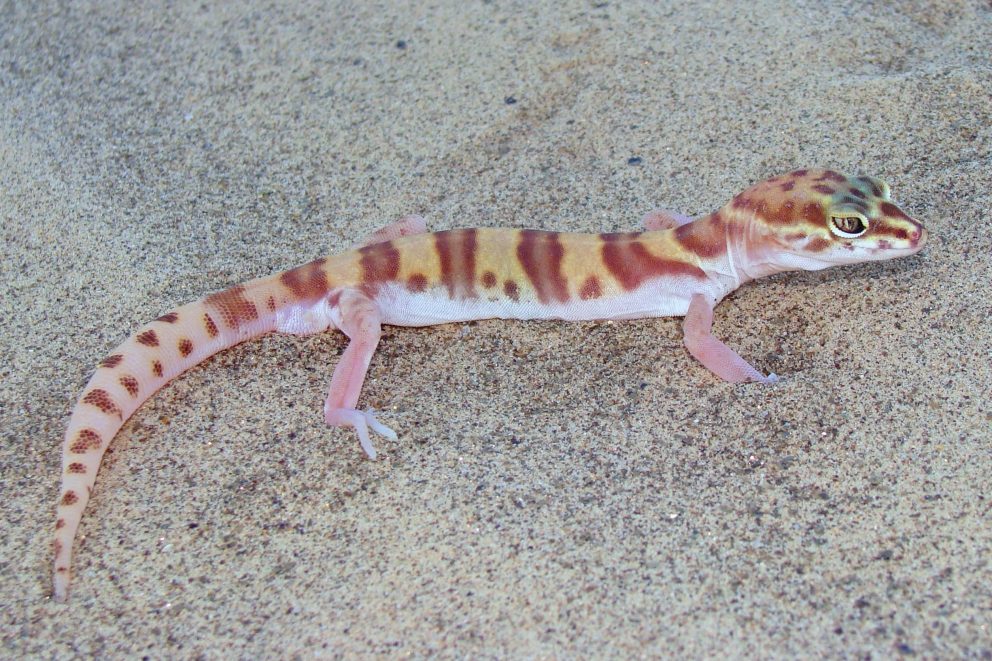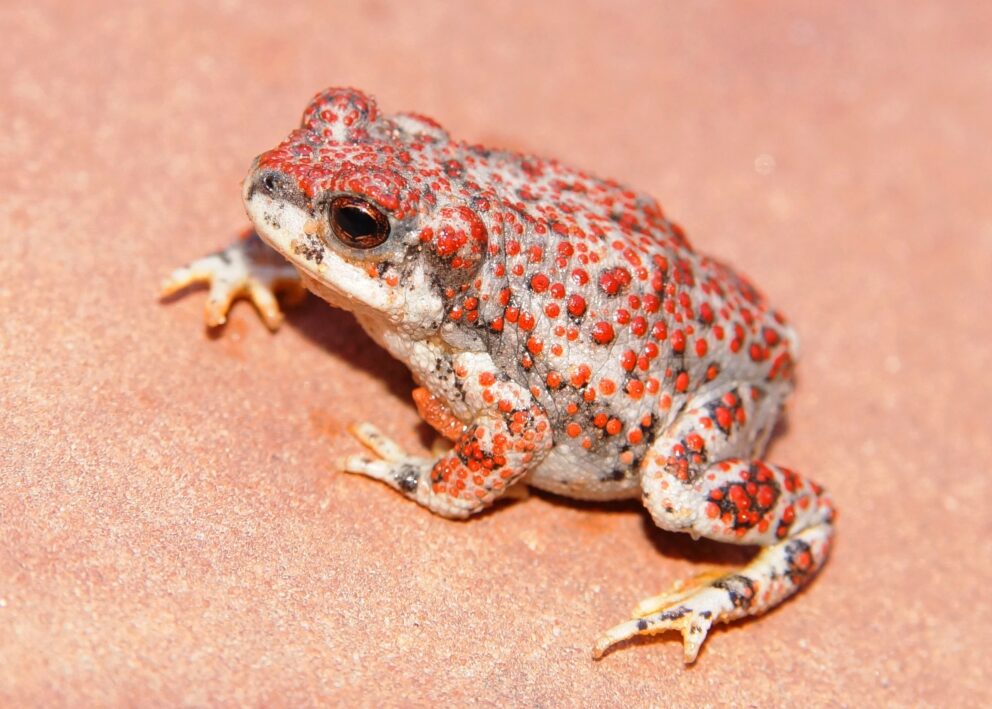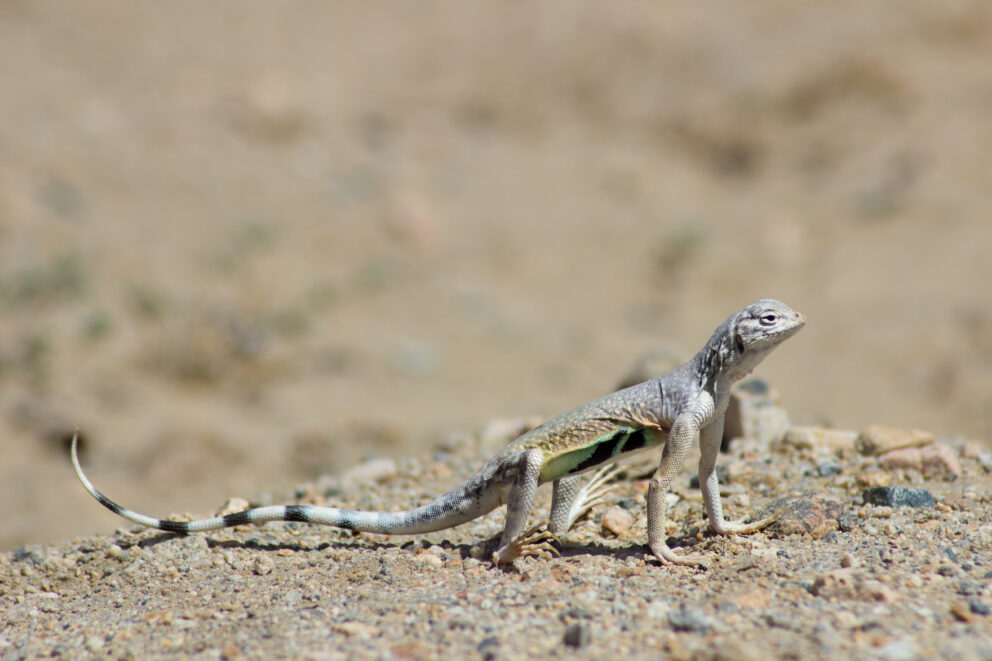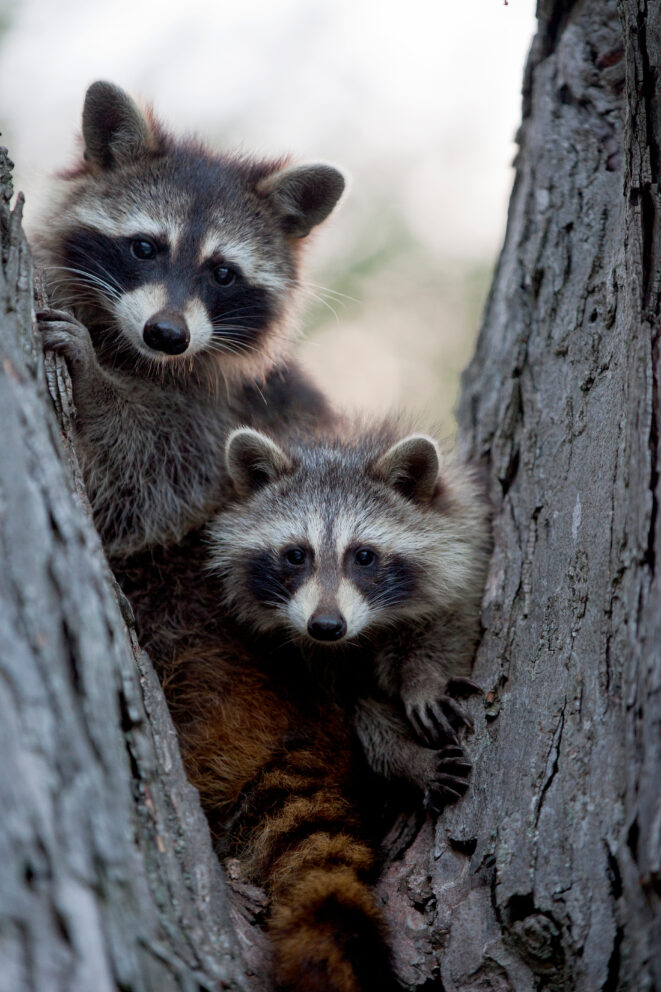- SCIENTIFIC NAME
- Coleonyx variegatus
- CLASSIFICATION
- Reptile
- LIFE SPAN
- 5-8 Years
- STATE CONSERVATION STATUS
-
- Priority Species
- Unprotected
- FEDERAL CONSERVATION STATUS
- Least Concern
- GAME STATUS
- Non-Game
- Washoe
- Humboldt
- Pershing
- Churchill
- Mineral
- Lyon
- Douglas
- Carson City
- Storey
- Elko
- Lander
- Eureka
- White Pine
- Esmeralda
- Nye
- Lincoln
- Clark
Habitat & Range
These geckos prefer habitats with creosotes bushes and sagebrush. They can also be found in sandy barren and rocky areas.
- Mojave desert
- Sand Dunes
- Warm desert riparian
Threats
- Habitat Loss
- Overcollection
Natural History
Western Banded Geckos are nocturnal and spend most of the day hiding under cover or underground. They may take cover under rocks, in mammal burrows, or even under cow dung. They use the cooler temps of nighttime to do most of their foraging. Their diet is mostly arthropods such as beetles, grasshoppers, isopods, spiders, and larvae.
These small lizards have plenty of predators. They use their coloring to help them blend into their desert environments, but when that doesn’t work they can drop their tails. This helps to distract their predators because their tails continue to move while the gecko makes its getaway. Their tails will regenerate.
Fun Facts














